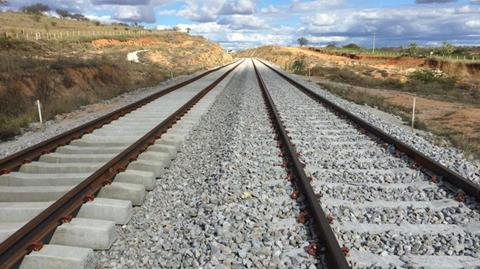
BRAZIL: Agreement for construction of the final section of the R$25bn Nova Ferroeste project was reached between the Ministry of Infrastructure and the state government of Paraná at the end of December. Running over the 405 km between Guarapuava and the port of Paranaguá, the scheme was one of 36 projects submitted to the federal government under the Pro Trilhos programme.
Federal approval for construction by the private sector of the other sections of Nova Ferroeste was granted earlier in December, also under the umbrella of Pro Trilhos. These include the 76 km from Maracajau to Dourados, a 166 km line from Cascavel to Foz do Iguaçu on the border with Paraguay and Argentina, and a 286 km link running south from Cascavel to Chapecó. Traffic is expected to include sugar, beef, pork, soy products, cereals, wood and fertiliser.
When complete, Nova Ferroeste will provide a 1 300 km link between the state of Mato Grosso do Sul and the Atlantic Ocean. Paraná state already holds a concession for the section between Guarapuava, Cascavel, Guaíra and Dourados based on a contract signed in the 1990s ⸺ the 249 km 1 000 mm gauge section between Cascavel and Guarapuava section has been operational since 1996. This suggests that some or all of the Nova Ferroeste project may be built with a mixed-gauge (1 000 mm and 1 600 mm) alignment.
From Guarapuava, the route to the coast will run east to serve Inácio Martins, from where it will descend the Serra da Esperança. Continuing east, it will reach Balsa Nova and then pass to the south of the state capital of Curitiba via Araucária, Fazenda Rio Grande and São José dos Pinhais, from where a new double-track alignment will be built down the Serra do Mar. Over the 55 km between São José dos Pinhais and Morretes the tracks will parallel the BR-277 main road.
Construction in the Serro do Mar area will require sensitive treatment as it features large areas of protected forest — an environmental impact study is currently being analysed by the Brazilian Institute for the Environment & Renewable Natural Resources.
Construction is likely to start with the Balsa Nova – Paranaguá section, with the Balsa Nova – Guarapuava segment following later.
Luiz Henrique Fagundes, Co-ordinator for the State Railway Plan in Paraná, said that the role of the Guarapuava – Paranagua section of Nova Ferroeste was ‘essential’ as it would ‘transport this wealth brought from the producing regions, such as Mato Grosso do Sul, Paraguay, Santa Catarina and Paraná’. The other branches of the project were needed ‘to reach the large load-generating hubs’, he said.
- The 110 km Curitiba – Morretes section of the existing 1 000 mm gauge route between Curitiba and Paranagua was built in the 1880s and is used by the Serra Verde Express, a tourist service that offers spectacular views of the Serra do Mar for around 200 000 passengers a year.

















